Learn what exactly is “limp wrist” shooting, why it happens with some guns and calibers, and several techniques on how to correct it.
Table of Contents
Loading…
Proper Handgun Operation
Here you’ll see an animation of how a handgun operates.
When the trigger is pulled, the firing pin strikes the primer of the cartridge which sends the bullet shooting out.

The gas/recoil forces the slide (top of the gun) to slide back where it ejects the spent brass casing, and moves up a new round from the magazine.
Difference in Limp Wristing
What happens differently in limp wrist shooting is the bottom frame is not held stationary enough and actually moves along with the top slide.
Because of this, the slide cannot move back with enough force to either extract the spent casing or bring up a new round. You’ll see that the frame flips and moves backwards with the slide.
Here’s a couple animations of the possibilities:
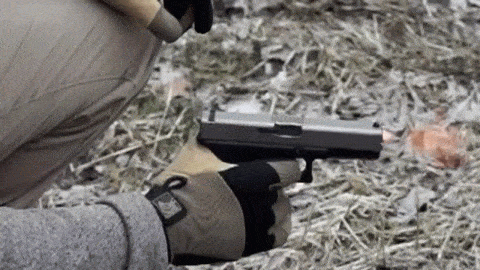
First is the case where there’s enough force to eject the casing but not enough to push forward a new round into the chamber.
This case there’s not enough force to eject the casing so it gets stuck when the slide moves forward.
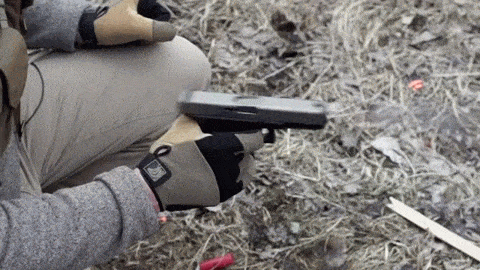
A third case (sorry no gif) is when the casing is ejected, no new round is moved into the chamber, but the slide moves back to its normal position. The next time you press the trigger, all you will hear is a click.
Limp Wrist Prone Guns & Calibers
You’ll more likely experience limp wristing with lighter frame guns and lighter recoiling ammo.
And the most common example…is the Glock handgun in 9mm.
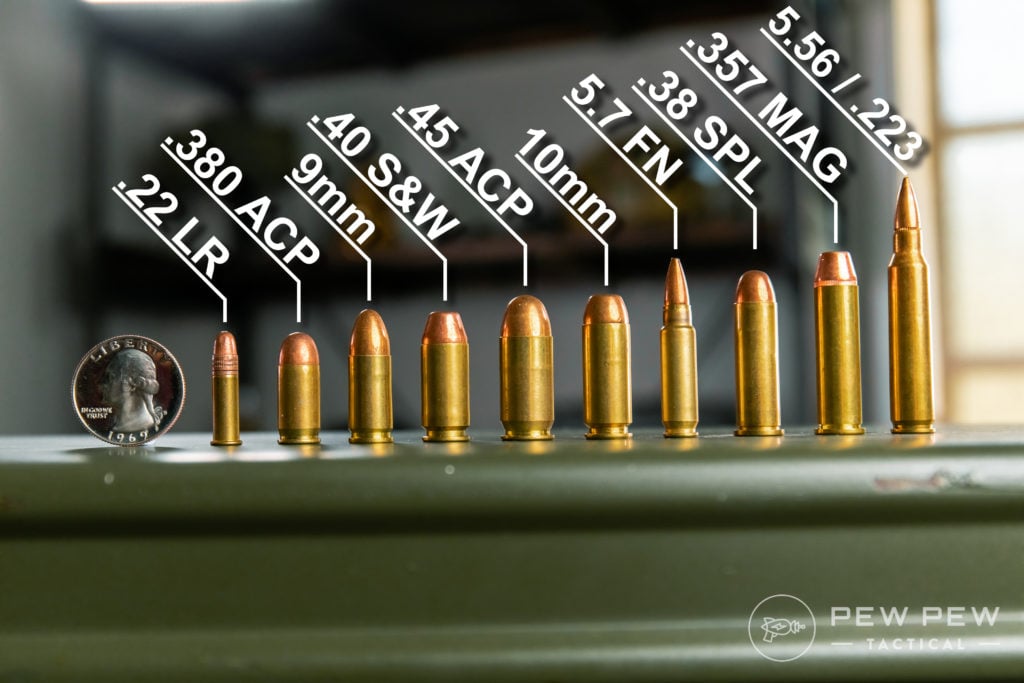
Because it is polymer, there’s just less mass in the frame to hold down the fort against the slide. And with 9mm as opposed to .40 S&W and .45 ACP, there’s less gas/recoil to help the slide move back.
But of course, 9mm Glocks are not the only possible handguns to limp wrist.
How to Correct & Fix Limp Wristing

Limp wristing gets a bad rep since it’s not just the wrist that is doing something wrong. It’s likely the entire combination of grip, strength, and stance.
I find a lot of newbies will have some sort of limp wrist failure, but that it can be fixed with technique rather than going to the gym.
Stance
Seems a little weird, how can how you’re standing affect the gun properly recoiling. But I believe with a proper stance that is stable and not leaning back, you set the foundation for everything else.
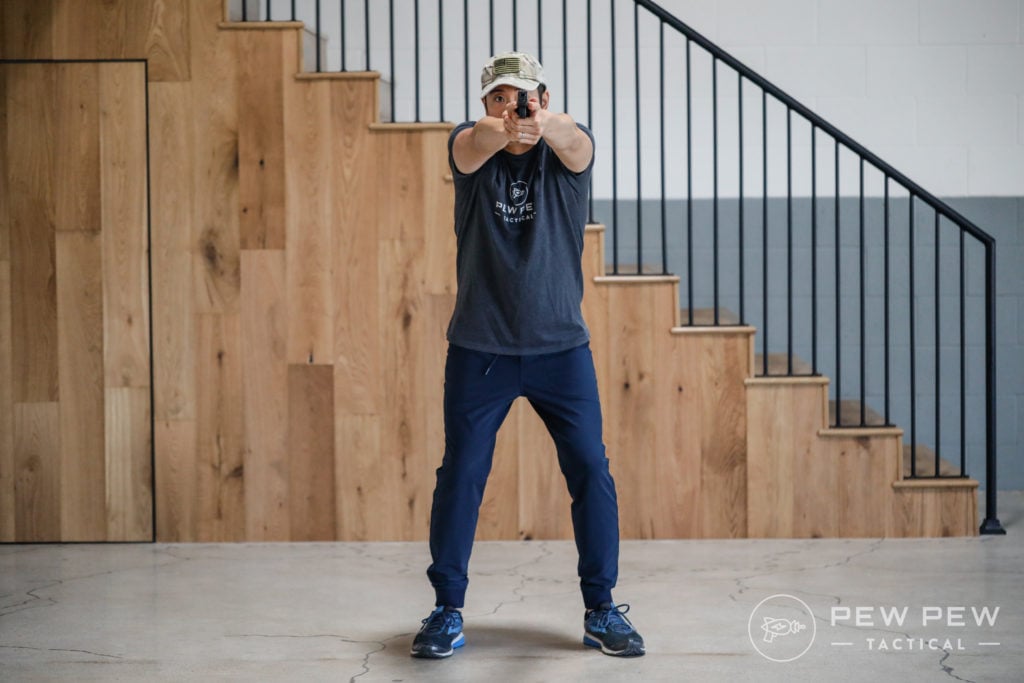
Grip
The most important part.
You want your hands to be as close to the slide as possible, but obviously not actually behind or on it. This is also known as getting close to the “bore axis,” where bore is the inside of the barrel, and pretty much in the middle of the slide.
The first part is your strong hand and putting the webbing between your thumb and second finger as high up as possible.
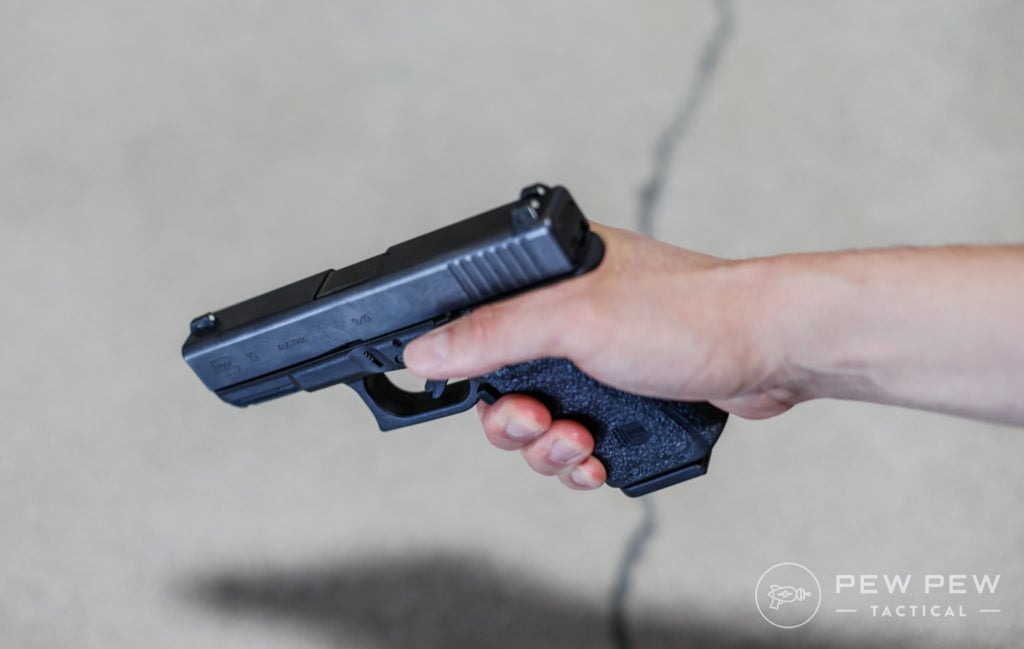
Another good tip is to align the slide (which will be moving back and forth) with your forearm bones. This will help dampen the recoil and move it into you not to the sides.
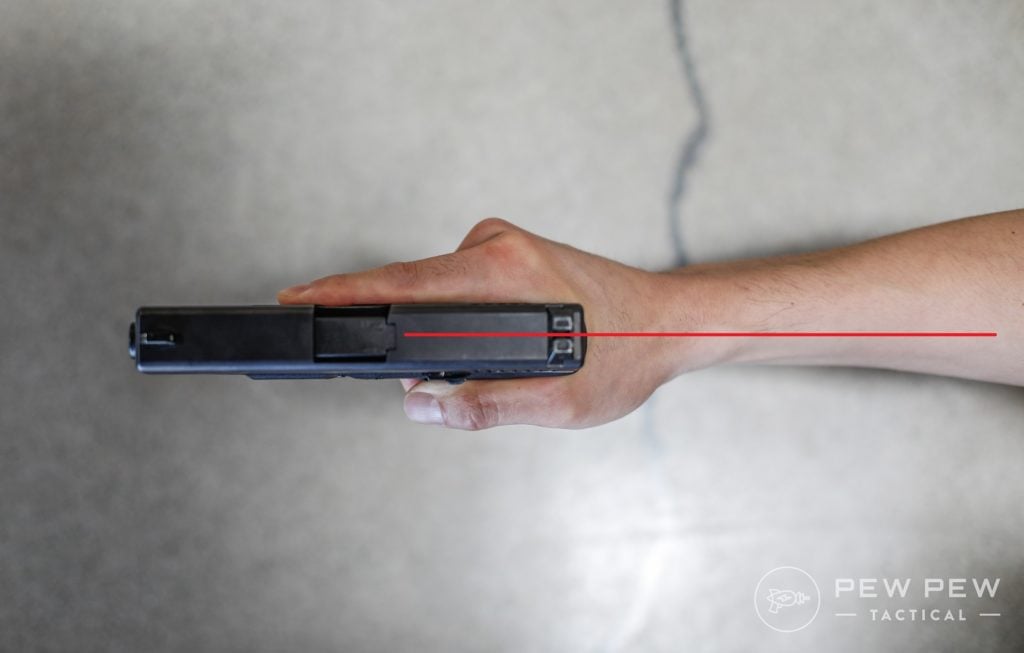
Now let’s take a look at the left side of the gun and the empty space. We want to fill up as much area on the gun as possible with your other hand.
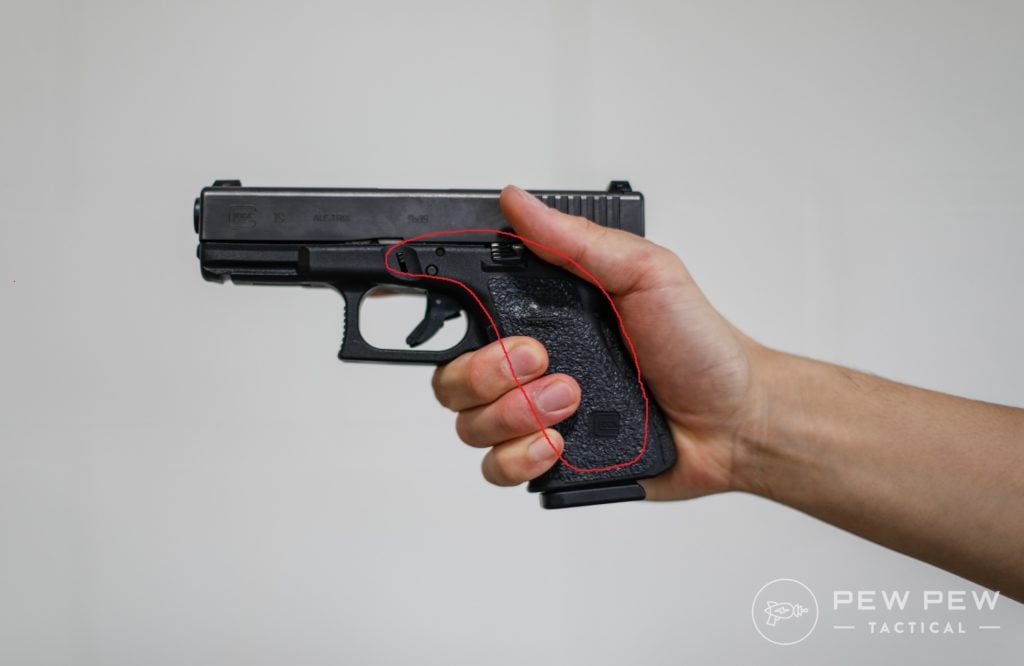
This is known as the thumb over thumb handgun grip.
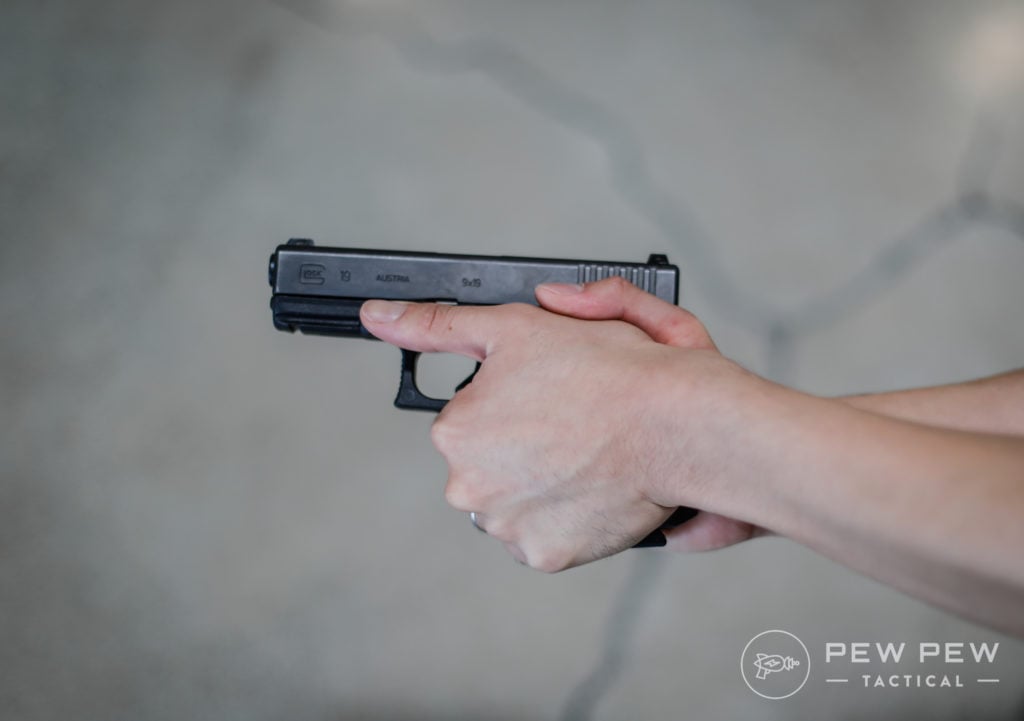
From farther away, you can see that the support hand wrist is pretty tilted, or set. Once you lock it in, it should help out immensely.
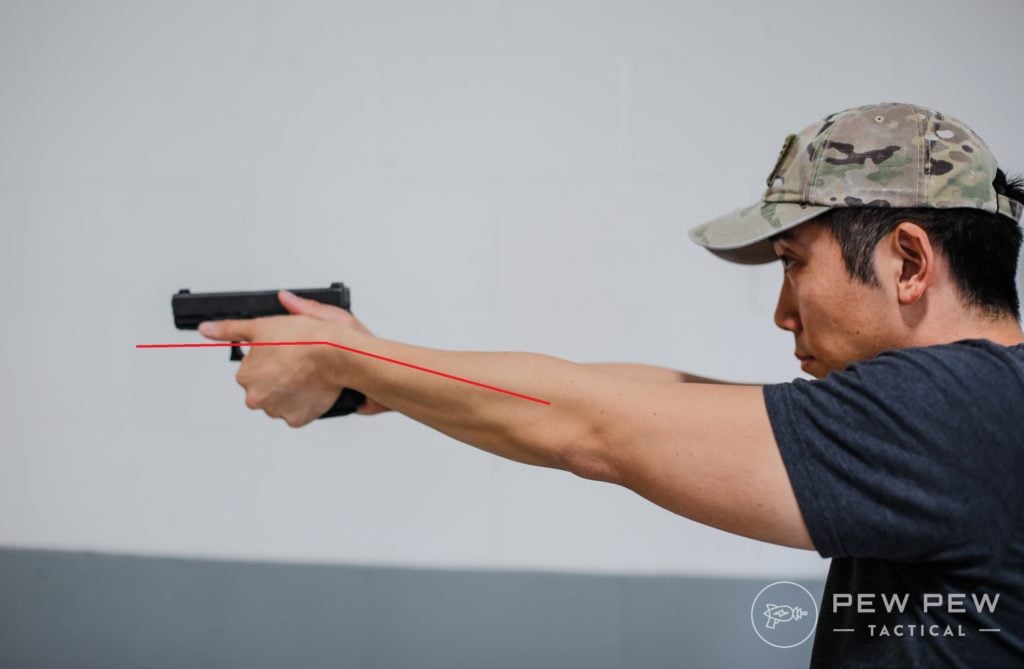
Lastly, to double check your hand/wrist placement, you can extend out your support hand to see if the four fingers are at a 45 degree angle to the slide.
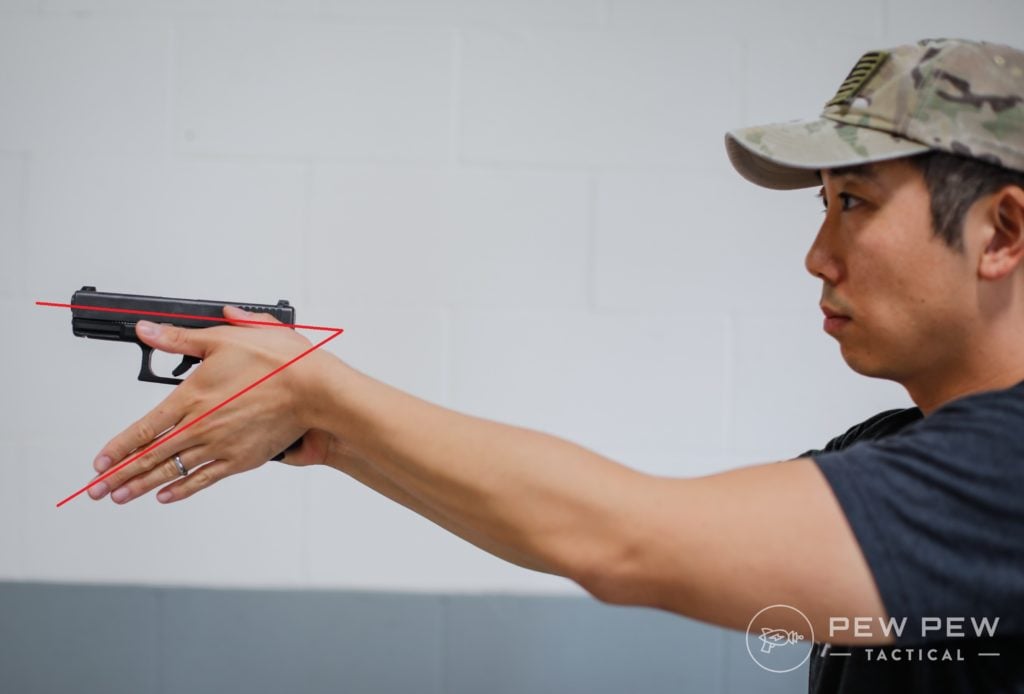
Conclusion
With a better stance and grip technique, you can fix your limp wristing.
And don’t worry if your shooting buddy was unable to replicate it. Soon you’ll have enough muscle memory of the correct way that you couldn’t do it even if you tried.
Check out our most popular helpful guide with How to Shoot More Accurately.









21 Leave a Reply
Many thanks for the education. Thanks again.
Pardon my lack of proper terminology, but isn't a "rapid double-fire" also a possible consequence of limp wristing? A less-experienced friend fired my Taurus 1911 and managed to fire two rounds with one trigger pull. Was like a full-auto handgun for two rounds. All efforts at solving the mystery, including a trip back to Taurus' service department, concluded with a best guess of it being a case of limp wristing. Your thoughts?
I have been shooting since 1966 and never had a problem — until this year. So what has happened? I turned 74 in September — that’s what happened. To make up for my physical changes due to age, it seems I have changed my grip and my stance. At the range last night I shot 9mm and 45ACP and wasplagued with malfunctions (FTE, FTL, etc.). Now I can see what the problems are and look forward to my next time out to the range.
Update..... got it back from Sig. Went to the range and determined to maintain a firm hold during firing. I went through approx 75 rbds and it mostly went smoothly with the exception of 2 rnds failing to be ejected (spent rnd remained in the chamber)
So my second experience was vastly different than the first but I'm asking myself if I should carry this sub compact if I need to concentrate do much to not experience failures. It's me not the gun but I've been shooting all sorts of srmus since 1993 including S&W Shield, Ruger LCP, Ruger EC9, and many others. Never had this experience so while it may be my fault technically, practically I think I'm going to keep the trigger unit in the full size and go for another sub compact. This 250 sub compact recoil spring is freekin stout!
I have the sp 2022, just bought It two weeks ago and I'm also experiencing ftf malfunctions. I stopped limp risking and changed ammo. Went through 100 rounds with no problem. Before I left the range, tried the problem ammo just to verify it was the problem and had a malfunction immediately. I've read some guns just don't like some ammo or the ammo in 115 grain is just not powerful enough for a new 9mm with a tight spring. Not advice just a response
Wow. So I just bought a used Sig P250 sub-compact and the full size. I went to the range and every rnd malfunctioned with the sub compact. It was so bad, I needed to load all the magazines one rnd at a time to avoid dropping the mag! BUT...The full size was perfect! It went through 100 rnds like butter. I sent the sub compact in to Sig and they couldn't replicate the problem. I felt non vindicated to say the least! I'll be getting the sub compact back this Monday and I'll be sure to implement these suggestions. I've been shooting for 30 years and never encountered this in my shooting!
Someone told me my jamming may be due to limp wristing. I'd never heard that term before so i looked it up. Here i am and wow i think they nailed it. Your explanation was so spot on and you even answered my questions before i could ask them. Thank you! I had to share this page.
Is it possible for a casing not to be extracted (completely in chamber) with a H&K VP9 9mm due to limp wrist or improper holding?
Yes, it is effectively possible on all modern semi-auto pistols.
Great info! Super teacher!
thank you so much
Unfortunately Mr. Smith is not using his spoken language fully. Nor does he pronounce. For someone with 20/20 hearing that may not be an issue but for me with impaired hearing and hearing aid, I just cannot understand what he says.
Thanks for this excellent instruction. I've been shooting and carrying for many years, but this one was most helpful. Smith is a great teacher!
Excellent...it’s been a recent phenomenon with me, and I’ve been shooting for decades. Thanks
I feel your pain, Dennis. It never occurred to me that this is, apparently, common with lighter frame guns. Maybe it’s me not getting a good grip and not a defect with my P365.A couple of times during extended range sessions it’s not gone completely back into battery. Just by a hair, mind you, and a simple tap on the back of the slide remedies that momentary hiccup. Maybe I was just getting tired. I’ll have to pay better attention next time and see what happens. Thanks, Eric, and don’t forget your personal reply to me recently regarding my request that y’all cover the .327 Federal Magnum. Carry on!
Alternitavely, you can always shoot 9mm, a cartidge designed specifically for the limp wristed effemintate shooter.
The article specifically mentions that 9mm is more susceptible to failing from limp wristing so maybe actually read the article before you inject your size issues into the comments.
I wish I could "like" this comment.
Thank you very much. Now i understand why my wife has a problem with Glock in the range. I can explain it to her and help to fix a problem.
THANK YOU!!! Thank you for a very informative, non-judgemental, objective source for gun information and education. Keep up the good work.
You're welcome, Mark!